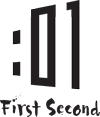test heading
On September 15th, 2005 a seminar took place with these luminaries. It was packed. And now it’s over.
Fortunately, :01’s Russian spy Danica Novgorodoff was there, and sent back some juicy items, which inaugurate our new category of TIPS FOR CREATIVE TYPES, because they’re that good.
NOT verbatim, unless hemmed in by “quotes”.
ON PROCESS*
KIM DEITCH: I think, what would I like to read; what would I like to see in stores? Start with an idea.
Draw when you’re stumped on the writing. Write when you don’t know what to draw.
If you’re still stumped, sleep on it. Work when you wake up.
JESSICA ABEL: Come up with a situation to accommodate your idea/character.
Talk about your story out loud with others; verbalize it.
I write a script before I start drawing.
ART SPIEGELMAN: In writing Maus, I thought, what comic book can I make that needs a bookmark? I wanted to make literature, not kid’s stuff.
Whatever you write about, the idea has to justify the enormous amount of work this medium requires. What is necessary to write? Find something central. What’s the nugget?
Also, have a formal concept. Each page is a visual paragraph. Find a drawing style appropriate to your story.
In the Shadow of No Towers… “I had no idea it was a book. I was just making pages while waiting for the world to end.”
DO YOU KNOW AHEAD OF TIME HOW YOUR STORY WILL TURN OUT?*
KD: You should. At least know the climax. It’s a terrible thing to be on page 4 of a 5 page comic and realize it’s a stinker.
JA: There’s nothing spontaneous about comics. Comics require structure.
AS: An editor once wrote, on endings: In the last chapter, every page has to double in weight till the end. On the last page, every paragraph has to double in weight till the end. In the last paragraph, every word has to double in weight.
It needs a feeling of inevitability.
ON CHARACTER DEVELOPMENT*
KD: Make model sheets of characters for continuity. Front views, side views, back views. Different expressions. You should be doing a lot of drawing outside of the comics you’re already doing. Keep sketchbooks. That’s where the spontaneity happens.
Get to know your character. Take your characters out for a ride; a day in the life of your character. Write about them outside of your story, give them backgrounds.
ON AUDIENCE*
AS: “The word aim is lethal. There’s something dangerous about targeting a work for a specific audience.” For example, Blankets wasn’t intended only for coming-of-age-aged people.
KD: “I’m not aiming for any one audience. It’s gotta please me first…. If you aren’t willing to stick your head out and take some chances, maybe you should get out of the game.”
ON PUBLISHING YOUR WORK*
JA: Make mini-comics. Submit to anthologies. Hand it out to your friends. Get feedback. Self-publish. Publish with small publishers. Build relationships. Go to conventions. Walk around with a box of mini-comics and a sign that says, “For Sale $2.” Do it over and over again.
AS: “There are a million wrong ways to do it – but many right ways also…. It’s not a career, it’s a calling.”
I got over 25 rejection letters for Maus. There was no context for it at the time.
Whether you come from a graphic bent, or have a strong narrative drive… if you keep knocking your head against a wall long enough, you’ll bring your other skills up to par.
WHAT TOOL IS INDISPENSABLE TO YOU?*
KD: Winsor Newton Series 7 brush.
JA: Raphael brushes.
AS: The computer.




